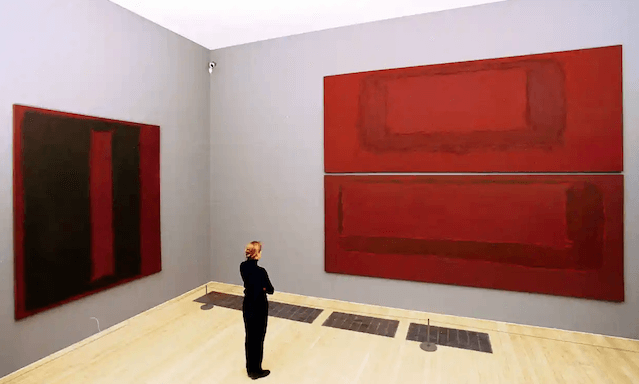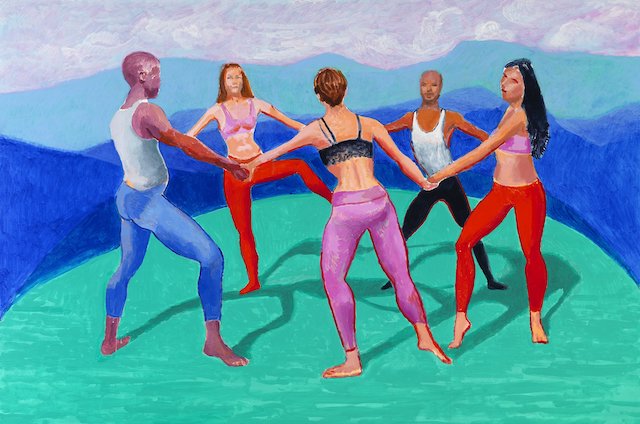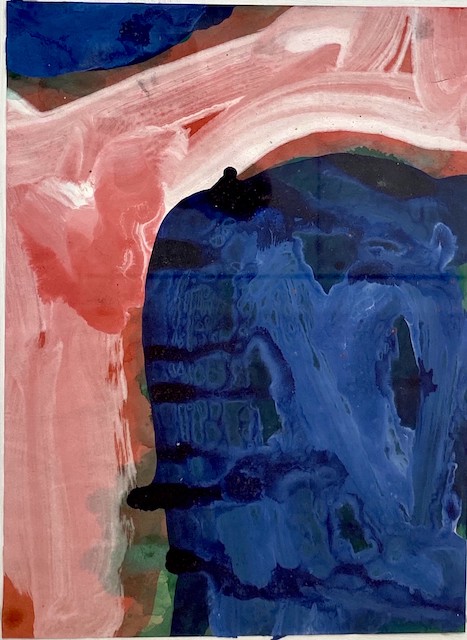
Famous Artists Who Created Acrylic Paintings

In days gone by, prestigious art schools of Paris or Florence would reprimand contemporary artists breaking away from the traditional medium of oil painting. Pompous professors, known to impose upon their protégés unspoken norms of “serious painters paint with oils,” are now being silenced by public opinion. The notion that acrylics belong in a kindergarten classroom rather than in the studio of an established painter is now debunked. In the present day, we see more and more famous artists championing the acrylic painting method. Since its invention in the mid-20th century, acrylic paint has provided artists with an alternative that many famous artists have flocked to adopt. Artsper details the acrylic medium’s journey to popularity. Keep reading to learn more about famous artists who created acrylic paintings!
The attractive qualities behind acrylic painting
Appearing on the market in the post-war period, acrylic paint provided artists with a substitute to oil paints. The invention of acrylic paint presented attractive alternative to their toxic, pricey, slow-drying competitor. However, like any new technological advancement, in the beginning, their quality at first was far from ideal. They were chalky, really matte, and weren’t loaded with a lot of pigment. Luckily that has since changed. Thanks to research in plastic manufacturing, acrylic paints now offer bright, saturated hues that many artists have come to adore. So what other attractive qualities does the medium hold?
Rhéni Tauchid, author of the 2018 book Acrylic Painting: Mediums & Methods, explains that one of the most significant aspects of acrylics is the malleability. If you incorporate an additive that thins or thickens your material, acrylics can take on the qualities of other paints. Acrylics can be tailored in terms of viscosity, rheology, gloss, relative coverage and texture. Each of these elements is a fundamental part of how the paint works. Modern artists such Nathanael Koffi have been particularly drawn to the textural side to acrylic paint. The medium provides a tactile quality in its ability to take on a three-dimensional form.
The medium’s devotees
Acrylic painting’s attractive qualities have not gone unnoticed by artists of the contemporary era. Famous artists who have painted with acrylics include Andy Warhol, David Hockney, Robert Motherwell, Kenneth Noland, Bridget Riley, Helen Frankenthaler, Timothy Mulligan, Roy Lichtenstein, and Mark Rothko, among others. Despite the medium’s rocky beginnings, famous artists took note of the paint’s unique qualities and began to incorporate it regularly into their palettes. David Hockney was one of the first renowned artists to use acrylics, as were Helen Frankenthaler and Mark Rothko. Since then, most contemporary artists have tried their hand at the medium.
David Hockney and his fondness for acrylic painting
One of the reasons Hockney was so drawn to acrylic paints was the speed with which they dry. One can apply one coat of acrylic paint, and within a few hours it’s dry enough to apply another. For his flat depictions of barren landscapes, Hockney used acrylics exclusively, because their matte quality and quick drying time allowed him to layer bright hues quickly, without blurring the colors. Since one can stack colors on top of each other so quickly, you can even achieve a technique called glazing with great speed. This was particularly important to the artist who paints on a mass scale.

Roy Lichtenstein
We know Roy Lichtenstein for his depiction of crying women, specially blondes. He is, of course, perhaps one of the most popular artists of the twentieth century. Born in 1923 in Manhattan, New York, Lichtenstein was one of the biggest contributors of American Pop art, besides great masters of the genre such as Andy Warhol. To create his pieces, Roy Lichtenstein deliberately used the codes of popular culture. Comics and advertisements heavily influenced his ideas and fantasies surrounding pop art. In his artworks, the lines are thick, the colors bold and saturated. Acrylic paint’s no smudge, fast-drying and malleable nature meant he could deliver on such precision. His iconic technique of masking sections of his paintings off through a layer of patterned dots, evoking the screen printing process of the advertising industry, was only made available to him through acrylic painting.
Helen Frankenthaler
Another New Yorker, the painter Helen Frankenthaler, worked amongst fellow artists David Smith, Jackson Pollock, Willem and Elaine de Kooning, Franz Kline. Born in 1928 in New York, she was influenced by Cubism and Abstract Expressionism and more particularly by Color-Field painting. Once an oil paint artist, Frankenthaler used acrylic paints exclusively from 1962. Acrylic paints gave her more control. They allowed her to create sharper, more defined edges, along with greater color saturation and areas of more opacity. The use of acrylic paints also prevented the archival problems her oil paintings had caused by the oil-degrading the unprimed canvas.
Claude Viallat
French abstract painter Claude Viallat has established an “anti-painting” practice of repetitive abstraction. He is considered a founder of the Supports/Surfaces movement. Born in Nîmes in 1936, he studied at the École des Beaux-Arts in Montpellier from 1955 to 1959, and then at the Beaux-Arts in Paris in 1962-63. Known for his lyrical and geometric abstraction in a technique known as All-over. He repeats his signature nugget form “all-over”, which is a neutral form, neither organic nor geometric in shape. His use of acrylic paint is playful and dynamic.
Timothy Mulligan
Timothy Mulligan attended Sacramento City College and received a degree in Fine Art from CSU, Sacramento. After receiving his degree, he worked as a printmaker creating etchings and prints. In 2011, after taking a long break Timothy returned to art to pursue his passion to paint on canvas. Discovering a love for acrylic paint, he sought inspiration in the landscapes, cityscapes, and waterscapes of the US. His acrylic paintings are particularly marked by their flat and balanced quality thanks to the plastic medium’s malleability. In particular, Mulligan appreciates the smoothness of acrylics when he depicts soft scenes of aquatic landscapes.
There you have it! A list of famous artists behind some amazing examples of acrylic painting. We hope you’ve learnt to appreciate this medium and its adoring artists even more!

About Artsper
Founded in 2013, Artsper is an online marketplace for contemporary art. Partnering with 1,800 professional art galleries around the world, it makes discovering and acquiring art accessible to all.
Learn more















